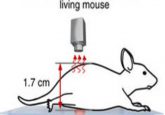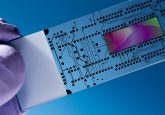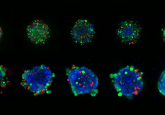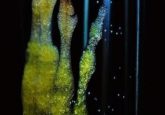Tiny Skyscrapers help generate more electricity from cyanobacteria

Tiny skyscraper-like electrodes have been developed by researchers to enhance cyanobacteria’s energy conversion from sunlight and generate enough electricity to power a small device.
Photosynthetic bacteria (cyanobacteria) are Earth’s most abundant life forms and have previously been studied as a renewable energy source. Now, researchers from the University of Cambridge (UK) have developed a 3D printed electrode that increases the energy collected from the bacteria by over an order of magnitude.
“There’s a bottleneck in terms of how much energy you can actually extract from photosynthetic systems, but no one understood where the bottleneck was,” explains Jenny Zhang, who leads the research group. “Most scientists assumed that the bottleneck was on the biological side, in the bacteria, but we’ve found that a substantial bottleneck is actually on the material side.”
Instead of altering the photosynthetic mechanisms of cyanobacteria to increase energy production, Zhang’s research group looked at optimizing the environment they grow and live in. Cyanobacteria need lots of sunlight to grow, and they need to be attached to electrodes to extract excess electrons from photosynthesis to generate electricity. So, the team developed grids of branched electrodes that are 3D printed using metal oxide nanoparticles, forming a densely packed structure that increased access to sunlight.

Unzipping the C. elegans immune response to viral infection
The zip-1 gene in the worm Caenorhabditis elegans (C. elegans) has been identified as the central hub for immune response – providing new avenues for research into human immunity against viruses.
“The electrodes have excellent light-handling properties, like a high-rise apartment with lots of windows,” said Zhang. “Cyanobacteria need something they can attach to and form a community with their neighbors. Our electrodes allow for a balance between lots of surface area and lots of light – like a glass skyscraper.”
Once the self-assembling cyanobacteria have settled into their new homes and are ‘wired’ onto the electrodes, they are more efficient at producing bioenergy than some other technologies, such as biofuels and other methods that also rely on photosynthesis.
Compared to other renewable technologies, which have limitations like their reliance on farming and land use, cyanobacteria are low maintenance as they only need water and sunlight to generate electricity. These cyanobacteria communities have already matched solar conversion efficiencies and indicate that a ‘biohybrid’ approach to solar energy production could be an important aspect in zero-carbon energy generation.
The research group hopes this is one step towards improving the sustainability of renewable energy technologies and devices.
“Cyanobacteria are versatile chemical factories,” said Zhang. “Our approach allows us to tap into their energy conversion pathway at an early point, which helps us understand how they carry out energy conversion so we can use their natural pathways for renewable fuel or chemical generation.”





